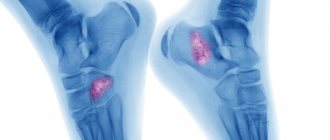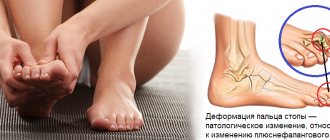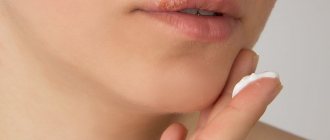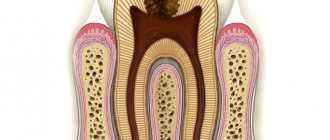- Wart removal
- Diagnosis of neoplasms
- Removal of condylomas
Plantar warts look like round or oval skin lesions with a diameter of no more than 1 - 2 cm. In most cases, they are not distinguished by color, but may have a pink or brownish color. Over time, the protrusion becomes rough and rough to the touch due to constant friction.
Where does the thorn come from and why is it dangerous?
Thorn is the popular name for warts. This is a viral skin disease that is accompanied by unpleasant sensations when in contact with shoes and pain when pressed. Outwardly, it resembles corns, certain growths on the skin, characteristic of which is a crater-shaped appearance.
The virus is transmitted mainly through sexual and household contacts. Also, scientists claim that the papilloma virus is present in the body of every person, and in stressful situations or decreased immunity, it is “activated”, thus appearing on the surface of the skin.
Shipitsa
To avoid the development and activation of the virus, it is not recommended:
- Wear shoes that are too narrow or uncomfortable
- Avoid excessive sweating of the palms and feet
- Thoroughly disinfect wounds or cuts
- Avoid stressful situations
- Affects a significant decrease in immunity
The spine is considered a harmless (benign) neoplasm, but it has the ability to become malignant. If the growth increases, it is worth contacting a specialist and having histology done. It can grow to large proportions and is accompanied by terrible pain and discomfort.
Reasons for appearance
As mentioned above, the main cause of warts is the human papillomavirus (HPV). The presence of HPV in the body is quite common. But the mere fact of the presence of a virus does not necessarily mean the appearance of papillomas.
Predisposing factors are:
- Poor foot hygiene
- Sweaty feet
- Skin trauma - abrasions, microcracks
- High virus activity
- Certain types of virus
- Decreased antiviral immunity
- Some common diseases that reduce the trophism (nutrition) of the skin of the foot are diabetes mellitus, polyneuropathy, arterial atherosclerosis
There are many types of human papillomavirus. Some of its varieties can cause the development of malignant tumors. The virus that causes plantar warts is not one of them. Spines never become malignant, but can cause other inconveniences - pain, cosmetic defects.
What and how can you treat the spine, which doctor should you contact?
In order to get rid of unpleasant calluses, you need to completely destroy it, this is done by a dermatologist. It is worth contacting a specialist immediately with the first manifestations of a viral disease. Although the spine is considered not dangerous, the consequences of the disease can be disastrous if you do not attach importance to it.
The main medical methods to combat thorn are:
- Excision with a scalpel. Used in the treatment of large warts. Not the most reliable, because... a relapse of the virus is possible. It may also leave a scar.
- Laser spine removal. A more reliable option, for small warts, high temperature does not leave a single chance for the virus to reappear.
- Electrocoagulation. This is a method of burning out surface growths with current. The virus does not spread after the procedure
- Cryodestruction. Characterized by freezing with liquid nitrogen. The procedure is painful. Afterwards, there is a slight redness, but over time it disappears
Removal of spines in Krasnoyarsk
Effective removal of spines in Krasnoyarsk is offered by the OK Laser Cosmetology Center.
The Center’s specialists are required to conduct a preliminary consultation and diagnosis with a dermatoscope in order to determine the nature of the tumor and the possibility of its safe removal.
The removal of spines is carried out in the following ways:
- cryodestruction (removal of the spine with nitrogen);
- plasters and ointments with a keratolytic effect followed by grinding with a milling cutter;
- laser treatment (the most modern and effective method);
- immunocorrective therapy - the introduction of antiviral homeopathic drugs directly under the spine with a thin needle or intramuscularly.
As already mentioned, the most modern (effective, fast and safe) method is laser treatment of spines .
How to remove a thorn on a foot, hand, or sole at home with vinegar: recipe for use
There are a huge number of expensive operations to remove warts and its derivatives. Medical methods for solving the disease are mainly used in critical cases. If the problem just begins to manifest itself, you should immediately use methods to destroy the virus at home. One of the most effective remedies that provides powerful resistance to unfavorable growths is vinegar.
Vinegar to the rescue
The method, although effective, is often accompanied by burning and discomfort.
- To get the desired result, you need to mix 3-4 drops of vinegar with a tablespoon of flour.
- The skin around the injury should be covered with a bandage, and the mixture should be applied to the wart and bandaged.
- This bandage needs to be changed every 2 days, and in just a week you will get rid of the infection
Anogenital warts (condylomas)
Among sexually transmitted diseases, anogenital warts are especially common. They are flat and elongated neoplasms or elastic elastic growths in the form of cauliflower or cockscomb. Such warts reach 1-1.5 cm and are gray, pink or flesh-colored.
Typically, this type of neoplasm is transmitted sexually: during vaginal/anal sex or even simply through contact with intimate areas without penetration. After oral sex, warts can appear on the mucous membranes of the mouth, throat, vocal cords or trachea. Such growths are called oral, or acute, condylomas. In rare cases, infection occurs through household contact or from mother to newborn.
Based on their appearance and structure, there are several types of genital warts:
- Pointed - loose polyps of pink, flesh-colored or red color, on a stalk or a wide base, reminiscent of cauliflower. They can occur either individually or in the form of multiple clusters. Genital warts are prone to rapid reproduction;
- Papillary - round, smooth growths without a stalk, rising above the surface of the skin by several millimeters;
- Keratotic - very dense, thickened formations that protrude significantly above the skin. Typically affects the female labia majora;
- Giant (Buschke-Levenshtein condylomas) are a rare type of wart. They are prone to rapid growth, accompanied by destruction of surrounding tissues. In extremely rare cases, giant condyloma degenerates into a malignant form;
- Flat - formed both singly and in the form of multiple clusters. There are practically no symptoms, sometimes itching and discharge may occur. The affected area of flat growths is the vaginal mucosa and cervix in women.
The appearance of anogenital warts and the deterioration of their condition are often accompanied by other sexually transmitted diseases (ureaplasmosis, trichomoniasis, chlamydia, etc.). It is impossible to protect yourself or your partner from infection using a condom, since in this case it is ineffective. It is necessary to completely abandon intimate relationships until complete recovery.
Anogenital warts occur equally often in people of both sexes who are sexually active (usually from 20 to 25 years). The incubation period for this disease varies from three weeks to nine months, with an average of about three months.
In men, condylomas are most often found on the foreskin, scrotum, inside the urethra and on the penis. They can be localized around the anus and rectum, especially in homosexual men. In women, warts appear mainly at the level of the vulva, vaginal wall, cervix and perineum; The urethra and anal area may also be affected.
Genital warts are more common in immunocompromised patients. The rate of growth varies, but pregnancy, immunosuppression (suppression of the immune system), discharge from the urethra, vagina or rectum, accumulation of smegma, or skin maceration (the natural process of swelling of the epidermis (layer of skin) with prolonged contact with liquid) can accelerate the growth and spread of warts.
Characteristic symptoms of the disease:
- severe itching at the location of the growth;
- painful and uncomfortable sensations;
- burning;
- pain during and after sexual intercourse;
- foreign body sensation;
- problems with defecation when the wart is located in the anus;
- bleeding when condyloma is damaged.
In most cases, anogenital warts are benign, but they can degenerate into carcinoma. For this reason, in order to prevent cancer, condylomas, regardless of their position, shape and size, are always removed.
Anogenital warts are usually diagnosed clinically. Their morphology distinguishes them from typical lateral condylomas of secondary syphilis, but in any case, serological tests for syphilis are necessary in the initial phase and after 3 months. A biopsy is required to rule out carcinoma and is mandatory in cases of bleeding, ulceration or persistent warts.
Endocervical and anal warts can only be visualized by colposcopy and anoscopy. Application of a solution of 3-5% acetic acid for a few minutes before colposcopic examination causes the growth to change color to white, improving visualization and detection of small warts.
Recurrence of anogenital warts is promoted by:
- promiscuity;
- lack of personal hygiene;
- installation of an intrauterine device, termination of pregnancy using surgical traumatic methods or other medical procedures.
This type of wart is dangerous due to a number of complications:
- Lack of careful intimate hygiene or irritation of growths due to constant friction against underwear leads to ulceration of growths by secretion of purulent discharge with an unpleasant odor;
- In the absence of timely treatment, genital warts are prone to suppuration;
- Lack of therapy leads to the formation of a large number of warts. In particularly advanced cases, not even a small area of healthy skin remains;
- In the presence of anogenital warts, a strong decrease in immunity is observed, which is associated with a person’s susceptibility to any infectious disease. If the patient already has a chronic inflammatory disease (in particular, of the pelvic organs), it will necessarily get worse;
- Threat of degeneration into a malignant form.
How to remove spine with celandine: recipe for use
Thanks to celandine, the spine can be removed in about one month. This is a gentle method, and also quite cheap. Celandine juice works without any discomfort or burning. By the way, celandine is often used for antifungal agents.
- Before the procedure, it is worth steaming the damaged area of the body, or better yet, cutting off the growth with a sterile instrument. Thus, the treatment proceeds much better and becomes more fleeting
- Next, you just need to drip or lubricate the wound with celandine juice, as often as possible per day
Plantar wart removal price
The cost of removing plantar warts in Moscow can vary and reach several thousand rubles.
Before removing the spine, you need to clarify the cost of the manipulation. Many clinics indicate a low cost in their price list. Most often, this means that the true price is veiled and at the appointment it turns out that you need to pay extra for anesthesia, bandaging, etc.
In our clinic, the price list indicates the full price of the intervention, i.e. no additional payments will be required.
Consultation with a doctor at the initial appointment - 1500 rubles
Removal of a plantar wart— RUB 1,500
How to remove a thorn with propolis?
Spine is a viral skin disease that is accompanied by unpleasant sensations and pain when pressed. Dealing with derivatives of warts is a rather difficult and lengthy process, but you can get rid of the disease with the help of traditional medicine.
Using propolis
An excellent, fast-acting remedy that many praise and recommend is propolis:
- First you need to steam the keratinized area and carefully cut it off with sterile scissors.
- Then, knead a small piece of propolis and apply it to the indentation. Cover with a bandage overnight
- This substance is quite effective, so several procedures will be enough to solve the problem.
Senile (age-related keratomas, seborrheic keratoses) warts
Senile warts are one of the most common skin lesions that appear in old age as a general sign of skin aging. Despite their name, they are not caused by the human papillomavirus.
Seborrheic keratoses are extremely common. According to statistics, more than 90% of the population over the age of 60 have one or more of them. They are equally common in both men and women. It is not uncommon for the disease to affect people aged 30-40 years, as well as young people under 20 years of age.
Keratomas and keratoses can appear on any part of the body, including the scalp, face and genitals. The exception is the palms, soles of the feet and mucous membranes. It is rare for a person to develop only one growth. Over time, age-related keratomas become more and more numerous. Many people inherit a tendency to develop a very large number of these tumors. Some of them may have hundreds of wart-like growths scattered throughout their body.
In the early stages, aging warts appear as slightly raised light brown spots or papules. They can remain very flat and resemble freckles in appearance, or they can gradually thicken and develop a rough, warty surface, like a tumor on the skin. In most cases, they darken slowly and may eventually turn black.
These color changes are harmless. Many senile warts remain pinkish in color. Typical of these are small keratin plugs that can be seen on the surface of the wart.
Keratoses are usually round or oval in shape. Some seborrheic warts are irregular in shape. Their size can vary from one to several centimeters in diameter.
The cause of age-related keratomas is unknown. They are generally considered to be degenerative in nature and appear in large numbers as the skin ages. It is assumed that ultraviolet radiation increases the likelihood of their development.
There are five traditional forms of age-related warts:
- Spotted, or popularly “death freckles” . They form in numerous clusters on the hands and face. Such growths are round with an uneven contour and a smooth or slightly rough surface. It has several color options: light brown, brown-brown or pinkish-yellow;
- Papular or nodular . Larger growths tend to grow. Their typical color is gray or yellow. The surface of the wart is covered with horny layers;
- Classic keratoma . It is a collection of plaques tightly connected to each other. It is characterized by a jagged outline and a copper or pinkish color. As it grows, the middle part of the wart sinks;
- Cutaneous horn. It is a modification of keratoma. It is expressed as a cluster of dense keratinized dark brown plaques up to 1.5 cm.
Adverse reactions to certain medications and many chemotherapy drugs can contribute to the formation of irritated seborrheic keratoses—inflamed, red, crusty lesions. This leads to the development of eczematous dermatitis around the growth. Dermatitis can also cause new seborrheic keratoses to appear.
Age-related keratomas are always benign. This means that they do not spread and do not degenerate into a malignant form. The main problem is a cosmetic defect, especially if they develop on the face.
There are rare cases of skin cancer called melanoma that develops in a seborrheic wart. It is unknown whether this is just a coincidence or represents a true change in the cells in a seborrheic wart. A large number of age-related keratomas may be a sign of cancer of internal organs.
Typically, seborrheic keratoses are treated for cosmetic reasons or because they become itchy and irritating. If the growths, especially large and warty ones, are injured (rubbed against clothing, touched by something), they may bleed or become inflamed.
Diagnosis of the disease is usually made through a clinical examination. This type of wart is difficult to distinguish from skin cancer without histological examination. Therefore, very dark lesions that have changed in some way or that are growing rapidly require a biopsy to confirm the diagnosis and rule out the possibility of cancer. Darker lesions should also be checked by a doctor to make sure they are not melanoma.
How to remove a thorn with hydrogen peroxide?
Hydrogen peroxide is an excellent antibacterial agent and is widely used in medicine:
- In the fight against nodules, peroxide is also a fairly popular solution. There is no special recipe, you just need to clean the location and apply this solution several times a day, one drop at a time.
- Another way is to moisten the damaged area with a swab containing hydrogen peroxide.
Peroxide from the thorn
This method is not the most effective and fast, but quite gentle, and is suitable even for babies. The main thing is to make sure before use that the product will not cause an allergic reaction. To do this, you should drop a drop on an undamaged area of skin, mainly on the back of the hand, and observe the reaction. If there is no irritation or redness, feel free to use peroxide against the spine.
How is the procedure performed?
- At the beginning of the session, an injection of an anesthetic drug under the formation.
- Then the doctor acts with a laser beam on the pathological tissue , evaporating it and coagulating the feeding vessel of the spine to stop its further possible growth into the surrounding tissue.
- At the end of the procedure, the doctor injects an antiviral drug under the spine .
- After this, the wound surface is treated with an alcohol solution and a solution of potassium permanganate.
The duration of the procedure depends on the number, location, diameter, and age of formation of formations. The minimum duration of the procedure is 5-7 minutes.
How to remove the thorn with garlic?
Garlic is known to have a wonderful antiviral agent. That is why it is an excellent assistant for treating warts at home.
Garlic to the rescue
There are several ways to use garlic against condylomas:
- Peel and rinse a clove of garlic well, cut it into thin slices. Apply to the affected area and cover with a band-aid, just for a few hours. This procedure should be carried out no more than 3 weeks.
- Cut the peeled clove of garlic in half and rub the side of the cut onto the wart 5-6 times a day. Repeat the procedure until the papilloma completely disappears.
- Chop 4-5 cloves of garlic, pour 200 ml of boiling water, wrap it in a warm towel, let it brew for 1 hour. Next, lubricate the warts with this infusion 3-4 times a day.
How to remove the spine with iodine?
Iodine is an excellent antimicrobial agent and also has cauterizing properties, thus highly recommended against warts and papillomas.
- Since the liquid is quickly absorbed by the skin, for a quick recovery, it is worth smearing the problem area at least 2 times a day
- You need to apply the medicine with cotton swabs and pre-wash the area, up to 5 times a day. Course of treatment – one week
- It is also important that when using this method, the recurrence of the virus is practically eliminated.
Remove the spine with iodine
Baths with iodine not only help with condylomas, but also serve as a preventive measure for their appearance. The main thing is not to overdo it and use iodine, so as not to get burns.
Laser removal of thorns
Laser hair removal has proven its effectiveness for many years. The laser systems used in our salon in Yekaterinburg produce a powerful stream of radiation, which sharply increases the temperature in the affected tissues and, as it were, “evaporates” them, thus removing the thorn.
The laser beam acts specifically without affecting surrounding healthy tissue. It simultaneously cauterizes the blood vessels, eliminating the risk of bleeding and infection of the wound.
How to remove the spine with Vishnevsky, salicylic, oxolinic, Viferon ointments?
Often, warts are benign papillomas and do not interfere at all, but there are also cases in which hardened growths are characterized by unpleasant pain and cause discomfort.
There are quite a large number of radical methods for solving the problem. But if the tumor does not bother you, then it is better to start with traditional methods, or, it is easier to use ready-made ointments. For example, the well-known Vishnevsky ointment, salicylic, oxolinic, Viferon.
Salicylic ointment has been justifiably popular for quite some time. It is made on the basis of acid and acts directly on the wart itself. Over time, it dies and disappears on its own. Only acid-based ointments are not designed to influence the virus itself, so a relapse is possible.
Salicylic ointment helps with warts of all types, and is also suitable for the feet. It should be applied to the keratinized body once every 3 days for several weeks. Afterwards, cover with a napkin. Its characteristics are no worse than the expensive cryotherapy procedure.
Unlike the previous product, oxolinic ointment is characterized by an antiviral effect, that is, it affects the deep layers of the skin. For the procedure, you should choose the evening, steam the growth, remove all dead skin. And apply the ointment to the wart itself and the undamaged area around it 2-3 times a day.
Ointments for removing spines
Doctors often prescribe Viferon for warts. A fairly common medicine, due to the fact that it is available in different forms, it is suitable for all types of warts. The procedures are painless and leave no marks on the skin.
The method of application is very simple - no more than 4 times a day, rub a small amount of Viferon into the localized area. If progress is not noticeable within a month, you should consult a doctor.
Vishnevsky ointment is considered one of the most powerful antibacterial agents that accelerates the regeneration process. Therefore, it is recommended to apply the ointment after cutting off the hardened body, which is worn until the wound heals.
Warts easily fall off after applying a cake made from a couple of cloves of garlic, 1 tbsp. vinegar essence and a small amount of wheat flour. The cake should be secured with a bandage and worn for 2-3 hours. If unsuccessful, repeat the procedure again. After that, the damaged area is lubricated with Vishnevsky ointment, a bandage is applied and worn until healing.
The effect on warts with ointments will go faster if you first steam the damaged area. Also, do not forget that first of all, it is simply necessary to consult a specialist, since self-medication can lead to disastrous consequences.
The first two weeks after removal
The first 2-3 days after removal, slight pain, redness around the removed formation, swelling, and itching may be observed, which go away on their own.
5-7 days after the procedure, a crust forms, which is rejected on its own after 7-10 days. A pink spot remains at the site of removal, which after 1-2 months fades and becomes invisible.
IMPORTANT! Within 2 weeks, the patient is required to treat the wound surface according to the instructions given by the doctor immediately after the procedure.
After these 2 weeks, the doctor conducts a preventive examination and, if necessary, gives further recommendations.
How to remove a spine with a Salipod patch?
Salipod is known as an excellent softening and antibacterial agent. In most cases, the patch is used against corns and calluses, warts and growths.
The patch should be used in the following order:
- Apply the patch to the tumor for 1 day
- Carefully remove the patch. The body of the wart should be very soft
- Use nail scissors to cut off the unnecessary soft wart
- Reapply the patch to the cut site for a day.
- When removed again, a small indentation may remain. The wound will dry out on its own and the skin will renew itself. For speedy healing, you can use Vishnevsky ointment. It will not only speed up the healing process, but also acts as an antibacterial agent.
Anti-spine patch
As a remedy against warts, it is ineffective. This is justified by the fact that the patch is made with a high content of salicylic acid (more than 30%). It does not act on the source of the problem - the papilloma virus, but only on the keratinized body. There is a chance to get rid of the problem only in the first stages of the disease.
How to recognize warts: symptoms and signs
An inexperienced person may confuse warts with other skin growths, for example, moles, calluses, melanomas.
The main differences between warts and moles:
- moles have a dark or black tint, while warts have a light color;
- warts grow tightly together with the skin, moles are separate structures, as if glued to the body;
- moles are soft and smooth to the touch, warts are hard, hard and rough.
It is also easy to distinguish a wart from a callus. When pressing on the growth, painful sensations will occur, and if it peels off, traces of hemorrhages will be visible underneath it. Under the callus is new, tender skin.
You can distinguish a wart from a melanoma by color and shape. This dangerous disease is characterized by heterogeneous red and black shades, proliferation and an uneven contour.
It is not difficult for a dermatologist to make the correct diagnosis using a visual examination. But a good specialist will not be content with just a simple inspection. He will definitely use a special magnifying device - a dermatoscope. If there is a suspicion of a pathogenic process, scraping of the surface layer will be required.
In the case of anogenital warts (located around the anus and on the genitals), consultation with a gynecologist or proctologist is necessary.
How to spell a thorn on a leg or arm with a thread: conspiracy
Prickles are a fairly common problem; they are often confused with corns and people try to get rid of them on their own. In order to get rid of painful growths using spells, it is worth understanding the cause of the appearance of this disease.
In ancient times, it was believed that warts appeared when a person was possessed by an evil spirit, caused damage, or when touching toads or frogs. Even in the 21st century, conspiracies are considered effective methods against warts and thorns.
Thorn Spell
Plot with a thread:
To carry out the ritual, you need to take a cotton thread of 30-35 cm. Perform it only during the waxing moon. Go outside, touch all the warts with a thread, and tie as many knots as there are warts on the body. After this we read the words: “A month, a month you are young, take my warts with you!”
Say three times and bury the thread underground, at a depth of 25cm. When the thread rots, then all the formations will come off. It is important to consider that women should perform the ritual on women's days - Wednesday, Friday, Saturday. And men - on Monday, Tuesday, Thursday.
Treatment methods
Depending on the severity of the problem and individual contraindications, plantar tumors are removed in different ways:
- electrocoagulation with high-frequency current;
- cryodestruction with liquid nitrogen;
- surgery;
- conservative drug therapy;
- radio wave exposure;
- laser technique.
Laser removal is recognized as the most effective and safe in modern medicine. Light radiation burns damaged tissue without injuring nearby ones. At the same time, neighboring cells are “sterilized,” which eliminates the risk of re-formation of plantar warts. The non-invasive, non-contact method eliminates the possibility of infection, does not cause discomfort, and has a short rehabilitation period. Another advantage of the laser is a reduced list of contraindications. The technique is also used in patients with insufficient blood clotting, a tendency to allergies, weakened immunity, and impaired metabolism.
Laser removal of warts on the elbow. Wart removal in progress. No traces remain
Laser removal of warts on the finger. Removing warts on hands with laser. Fast and painless.
Laser removal of multiple warts on the hand. Laser removal of warts
What is better to remove the spine: laser or nitrogen?
There are many folk methods against thorns and warts. If it is not possible to solve the dilemma at home, women turn to cosmetic procedures. The most popular of them are laser or liquid nitrogen removal of warts. In order to understand which procedure is better to do, it is worth first understanding them separately.
Removing papillomas with a laser is considered a fairly effective procedure; one will be enough to destroy the growth. The operation is painless, because Injected under the wart with local anesthesia, the procedure lasts up to 20 minutes. Thanks to the high frequencies, the beam regulates the condition of the blood vessels. Thus, it promotes the presence of a dry, favorable field for work. The laser not only removes the tumor, but also acts on the deep areas of the skin, which prevents relapse.
Removing the spine
The disadvantage of this procedure is that it leaves a wound on the skin. And if the wart was large, a scar may remain.
The procedure for using liquid nitrogen is very popular today. Due to the fact that it takes little time, literally 30 seconds. Before the procedure, tests are taken to prevent allergies. The sequence is:
- The doctor must disinfect the area
- Apply emollient
- Administer local anesthesia
- Apply the applicator
- After freezing, the skin is treated with a special product
The procedure is more painful, despite the fact that time passes quickly, it must be repeated several times. Negative consequences such as peeling of the skin and the appearance of dark spots may occur.
Removal of plantar warts
Peculiarities
When removing spines, you need to consider the following features:
1. Location on the sole increases the wound healing time (due to constant mechanical impact, sweating, etc.).
2. They are always removed deeply, forming a “crater”. Superficial removal is fraught with the risk of leaving the “roots” of the wart and recurrence.
3. “Home treatment” with folk remedies is undesirable, because with it, it is not possible to achieve the optimal depth of exposure, or, on the contrary, extensive chemical burns occur with various substances used for these purposes.
Methods
There are several methods for removing spines. They all boil down to the destruction of the wart, but this is achieved through various methods of influence, which can be divided into three groups:
- Destruction (destruction using laser, radio waves, electrocoagulation)
- Chemical destruction using various substances (liquid nitrogen, salicylic acid, alkalis, etc.)
- Surgical excision
Let's take a closer look at these methods:
Destruction methods are the most effective, because they destroy the wart completely and with high precision. The radio wave method should be considered the most optimal. It involves the most gentle and at the same time deep removal of the spine. During laser removal, the depth of penetration may not be sufficient to destroy the “roots” of the wart, which can lead to recurrence. When removed with an electrocoagulator, excessive damage to surrounding tissue occurs, which leads to longer wound healing and the formation of a rougher scar.
Chemical destruction is not very effective in treating plantar warts, but is more suitable for removing small papillomas on other parts of the body (i.e. those small formations that rise above the surface of the skin). Plantar warts are located almost flush with the skin and spread quite deeply inward. Therefore, the effect of a chemical on them is either not enough to completely destroy the wart, or, on the contrary, it is too extensive and causes chemical burns of the surrounding tissues, sometimes with the formation of long-term non-healing ulcers.
Surgical excision is rarely used for two reasons: firstly, extensive excision involving healthy tissue is simply not necessary and unreasonably increases the volume and invasiveness of the intervention. Secondly, the plantar surface of the foot is subject to constant mechanical stress (plus sweat production, limited “ventilation” of the wound due to shoes). All this greatly increases the risk of suppuration under the sutures. Surgical removal is advisable in cases where the wart is suspicious of a malignant formation and a high-quality histological (under a microscope) examination of the removed material is required.
Is it painful to cauterize the spine?
The spine is burned using both physical methods and folk methods at home. You can get rid of tumors using garlic, vinegar, hydrogen peroxide; also in radical ways - cauterization with laser and liquid nitrogen.
It goes without saying that the procedure is quite unpleasant, even if local anesthesia is used. However, it makes you feel better. Recovery from surgery may be more painful than the cauterization process itself. But this applies more to surgical interventions.
If we talk about “folk” methods of getting rid of growths, then indeed the process can be accompanied by discomfort and sometimes pain. Especially if before the procedure you steam the damaged area well and clean the top layer of skin.
Where can a plantar wart be removed in Moscow?
We can definitely say that spines need to be removed in a clinical setting; the intervention should be carried out by a qualified surgeon who has extensive experience in treating such pathology. In Moscow, this can be done by Dr. Igor Vitalievich Elshansky. He will remove the formation using the optimal radio wave method. The intervention is painless, performed under local anesthesia, and after the manipulation the patient can immediately go home. The clinic has all the conditions for qualified removal.
Don’t expect the wart to “go away” on its own, don’t try to remove it yourself, contact a professional!











